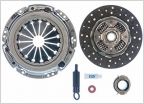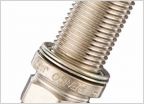-
Welcome to Tacoma World!
You are currently viewing as a guest! To get full-access, you need to register for a FREE account.
As a registered member, you’ll be able to:- Participate in all Tacoma discussion topics
- Communicate privately with other Tacoma owners from around the world
- Post your own photos in our Members Gallery
- Access all special features of the site
2.7l Will not start when hot - ANY ideas?
Discussion in '4 Cylinder' started by Murrfk, Jul 23, 2011.
Page 6 of 9
Page 6 of 9


 EXEDY 16090 OEM Replacement Clutch Kit
EXEDY 16090 OEM Replacement Clutch Kit Subaru "rumble" for our truck?
Subaru "rumble" for our truck? Plugs
Plugs 2.7 Liter, Oil & Filter Question
2.7 Liter, Oil & Filter Question Will a snorkel fit and which one?
Will a snorkel fit and which one?